There’s nothing more confusing than standing in your kitchen (or van, in my case) with two heavy pieces of cookware staring back at you. On one side: the bulky, beautiful Dutch oven. On the other: the trusty, seasoned cast iron skillet. Both are classics, both can handle serious heat, and both claim the title of “kitchen essential.”
Which one actually wins when it comes to everyday cooking? Let’s break it down.
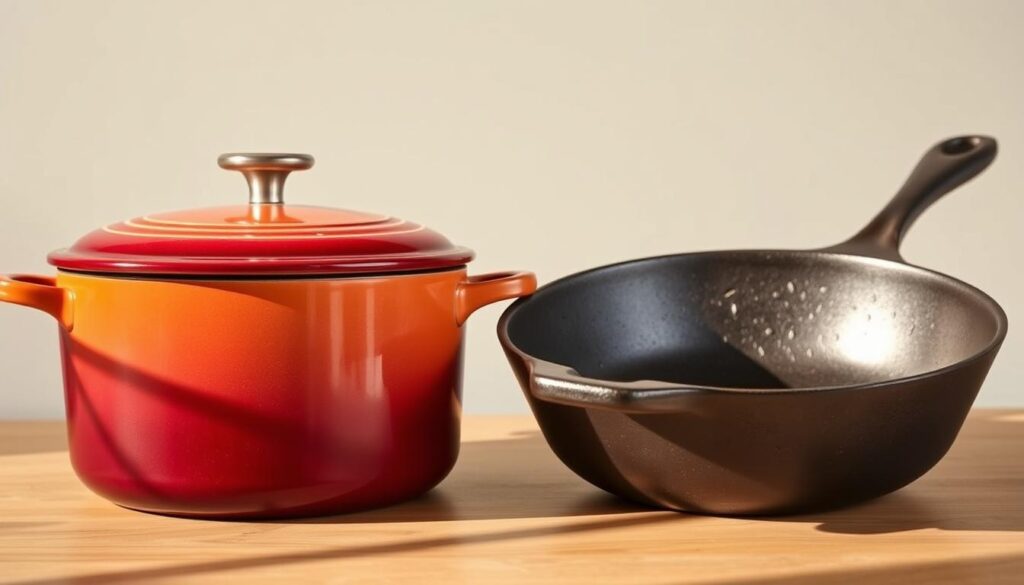
Choosing the right cookware for everyday cooking can be tough. Two top choices are the Dutch oven and the cast iron skillet. I use both and am here to share my insights. This will help you pick the best one for your cooking needs.
Meet the Contenders
The Dutch Oven
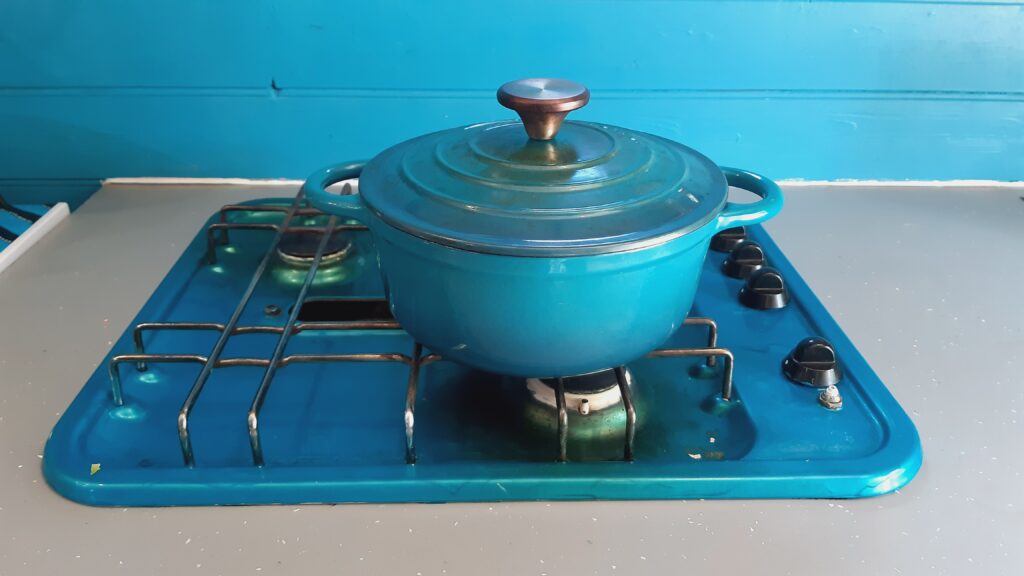
The Dutch oven is basically the tank of the cookware world. It’s heavy, deep, and comes with a snug lid that locks in flavor. Historically, people used them over open fires, and they’ve held their place in kitchens ever since.
- What it does best: slow-cooked stews, braises, bread, big batches of soup, one-pot meals.
- Why people love it: it keeps food hot for ages, it looks gorgeous on the table, and it’s almost impossible to mess up a stew with one.
The Cast Iron Skillet

Now let’s talk about the cast iron skillet – the everyday hero. It’s that pan you can fry eggs in, sear a steak, bake cornbread, or even toss into the oven for a frittata. A skillet feels like second nature once you get used to it, which is why so many people never cook without one.
- What it does best: frying, searing, sautéing, roasting small cuts of meat, baking.
- Why people love it: it’s versatile, it heats quickly, and with good seasoning, it’s naturally non-stick.
Everyday Cooking Showdown
Let’s put them side by side.
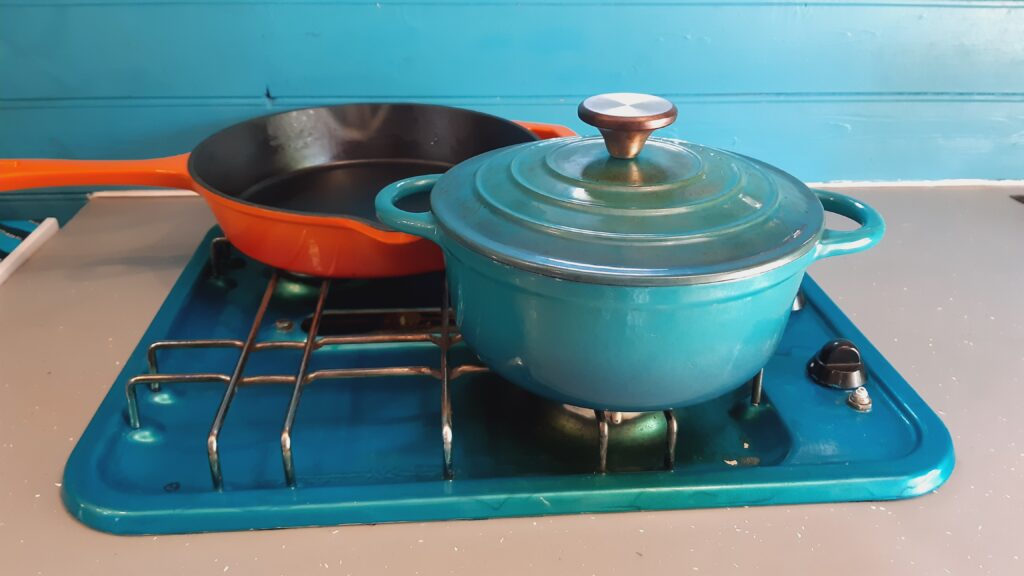
Cooking Style & Versatility
- Dutch oven: perfect for long, slow meals that cook all day.
- Skillet: unbeatable for quick meals, one-pan dishes, and fast sears.
Ease of Use
- Dutch oven: it’s heavy – like seriously heavy. Great for feeding a crowd, not so great if you’re just trying to cook some eggs.
- Skillet: easier to maneuver, great for daily meals, but not big enough for a gallon of soup.
Maintenance
- Skillet: needs seasoning (a thin layer of oil baked into the surface), but once you get the hang of it, it’s easy.
- Dutch oven: if it’s enamel-coated, super simple – just wash and go. If it’s bare cast iron, it needs the same love as your skillet.
Pros and Cons
In this section, we’ll look at the good and bad sides of using a Dutch oven versus a cast iron skillet for daily cooking.
Pros and Cons of Dutch Ovens
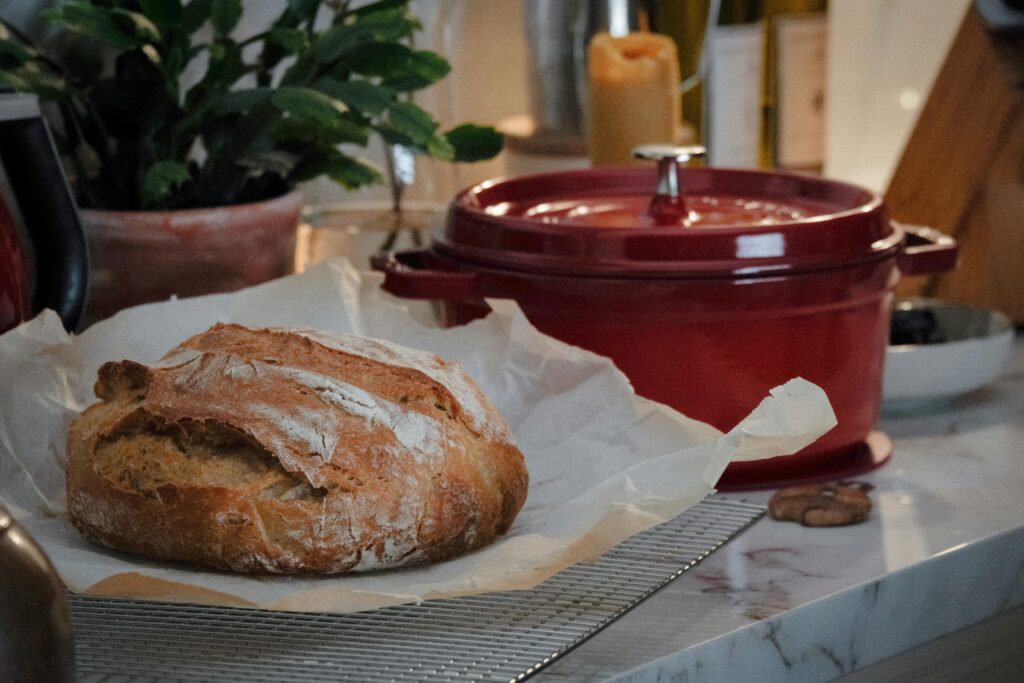
Dutch ovens are very versatile. They’re great for slow-cooking, braising, and roasting. They’re also very durable and can last for many years with the right care.
- Pros:
- Versatile cooking options
- Durable and long-lasting
- Excellent heat retention
- Cons:
- Can be heavy
- Requires maintenance (seasoning and cleaning)
Pros and cons of cast iron skillets
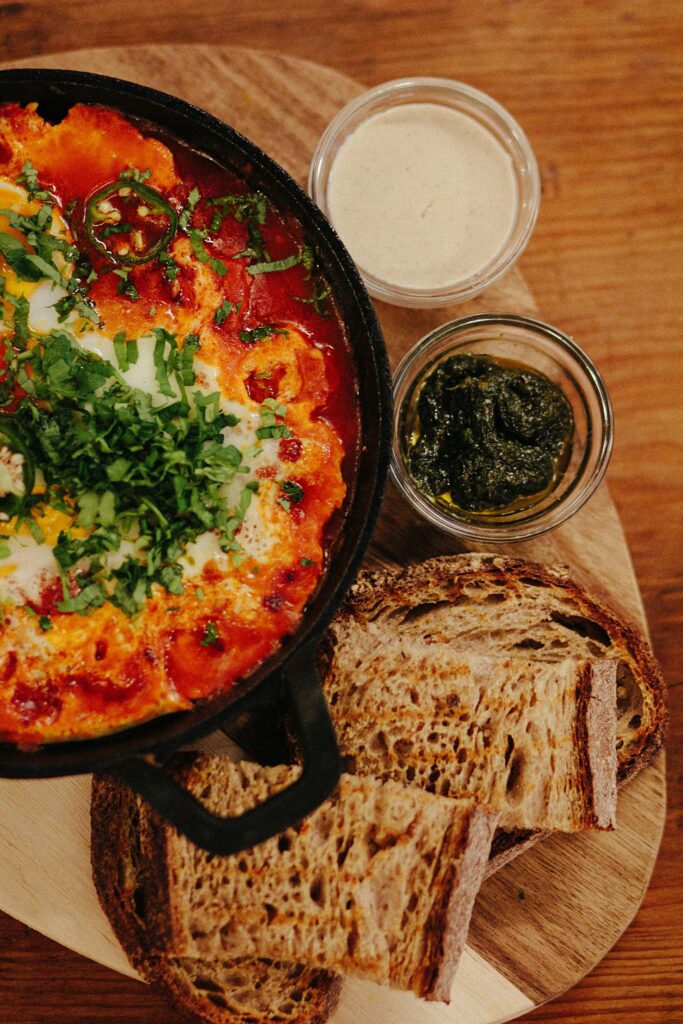
Cast iron skillets are also versatile and keep heat well. They’re perfect for searing meat and cooking eggs. They can be seasoned for a non-stick surface, but they can rust if not cared for.
- Excellent heat retention
- Can be seasoned for non-stick performance
- Versatile cooking options
But, they also have some downsides:
- Can rust if not properly maintained
- Requires seasoning
By considering these points, you can decide if a Dutch oven or a cast iron skillet is better for your daily cooking. I started off with a skillet and bought a dutch oven later on to make my bread.
4. Which One Is Best for Everyday Cooking?
Choosing between a Dutch oven and a cast iron skillet for daily cooking is common. It depends on your cooking style and preferences.
For slow-cooked meals like stews and roasts, a Dutch oven is best. It evenly distributes heat and keeps it for a long time. On the other hand, a cast iron skillet is great for stovetop cooking and searing meat.
When picking the best cookware for everyday cooking, think about what you cook most. Both Dutch ovens and cast iron skillets are durable. But they’re better for different cooking methods. Dutch ovens are best for oven cooking, while cast iron skillets are ideal for stovetop.
Here are some key points to consider:
- Cooking frequency and the types of meals you prepare
- The importance of heat retention and distribution for your cooking style
- Your preferred cooking methods (slow cooking, searing, frying, etc.)
- The ease of maintenance and cleaning for the cookware
Bottom line is:
If you make a lot of soups, stews, or love fresh-baked bread → the Dutch oven is your friend.
If you’re cooking eggs, veggies, meats, or quick meals → the cast iron skillet wins every time.
My Personal Take
Living in a van with two big dogs means space and weight matter. My Dutch oven? Love it for baking my bread every other day. My cast iron skillet? That thing basically lives on my stove. I use it for everything – stir-fries, pancakes, veggies, and even the occasional bake.
Final Verdict
After weighing the pros and cons, I’ve come to a final verdict on the Dutch oven vs cast iron skillet debate. Both are valuable additions to any kitchen. They offer durability and versatility for various cooking tasks.
The choice between a Dutch oven and a cast iron skillet depends on your cooking needs. A Dutch oven is great for slow cooking, braising, or roasting. On the other hand, a cast iron skillet is better for searing, frying, or baking.
Both cookware pieces distribute heat evenly. Dutch ovens retain heat better due to their thick walls and tight-fitting lids. Cast iron skillets are flexible and can handle higher heat levels.
You can’t go wrong with either choice. Both Dutch ovens and cast iron skillets are long-lasting and can become trusted kitchen companions. My advice is to consider your cooking habits and preferences. Choose the one that best fits your needs.
So, Dutch oven or cast iron skillet? For everyday cooking, the cast iron skillet takes the crown. But if you’ve got the space, budget, and arms to lift a Dutch oven, having both in your kitchen is the dream combo.
👉 If you’re new to cast iron, check out my guide on seasoning and cleaning a cast iron skillet
👉 Ready to shop? Here are some of my favorite skillets and Dutch ovens.
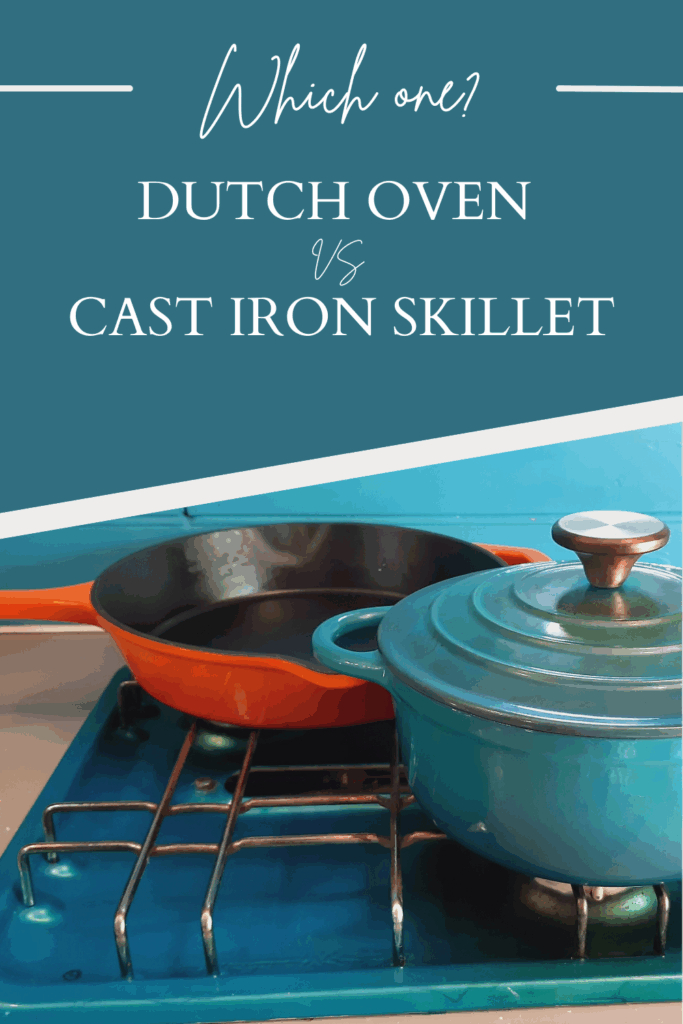
FAQ
What is the main difference between a Dutch oven and a cast iron skillet?
A Dutch oven is a thick, heavy pot with a tight lid. It’s great for slow-cooking and roasting. A cast iron skillet is versatile for searing and frying. It works on the stovetop or in the oven.
Can I use a Dutch oven for stovetop cooking?
Yes, many Dutch ovens work on the stovetop. But, always check the manufacturer’s instructions first. Some are only for oven use.
How do I maintain my cast iron skillet to prevent rust?
To stop rust, season your skillet often and dry it well after cleaning. Applying a thin layer of oil also helps protect it.
Can I use metal utensils with my Dutch oven or cast iron skillet?
Using metal utensils with cast iron is usually safe. But, avoid abrasive ones to prevent scratches. For enameled cast iron, use silicone, wooden, or plastic utensils to avoid chipping the enamel.
How do I clean my Dutch oven or cast iron skillet?
For cast iron, avoid harsh chemicals and soap. Clean it with hot water and a soft sponge. Dutch ovens can be cleaned with a gentle cleanser and a soft sponge. For more details, see my guide on seasoning and cleaning.
Are Dutch ovens and cast iron skillets compatible with induction cooktops?
Some Dutch ovens and cast iron skillets work with induction cooktops. But, it depends on the material and construction. Look for a ferromagnetic bottom or check the manufacturer’s instructions.
Can I use my Dutch oven or cast iron skillet at high heat?
Yes, both can handle high heat. But, preheat them slowly to avoid thermal shock. Always use oven mitts or tongs when handling hot cookware.
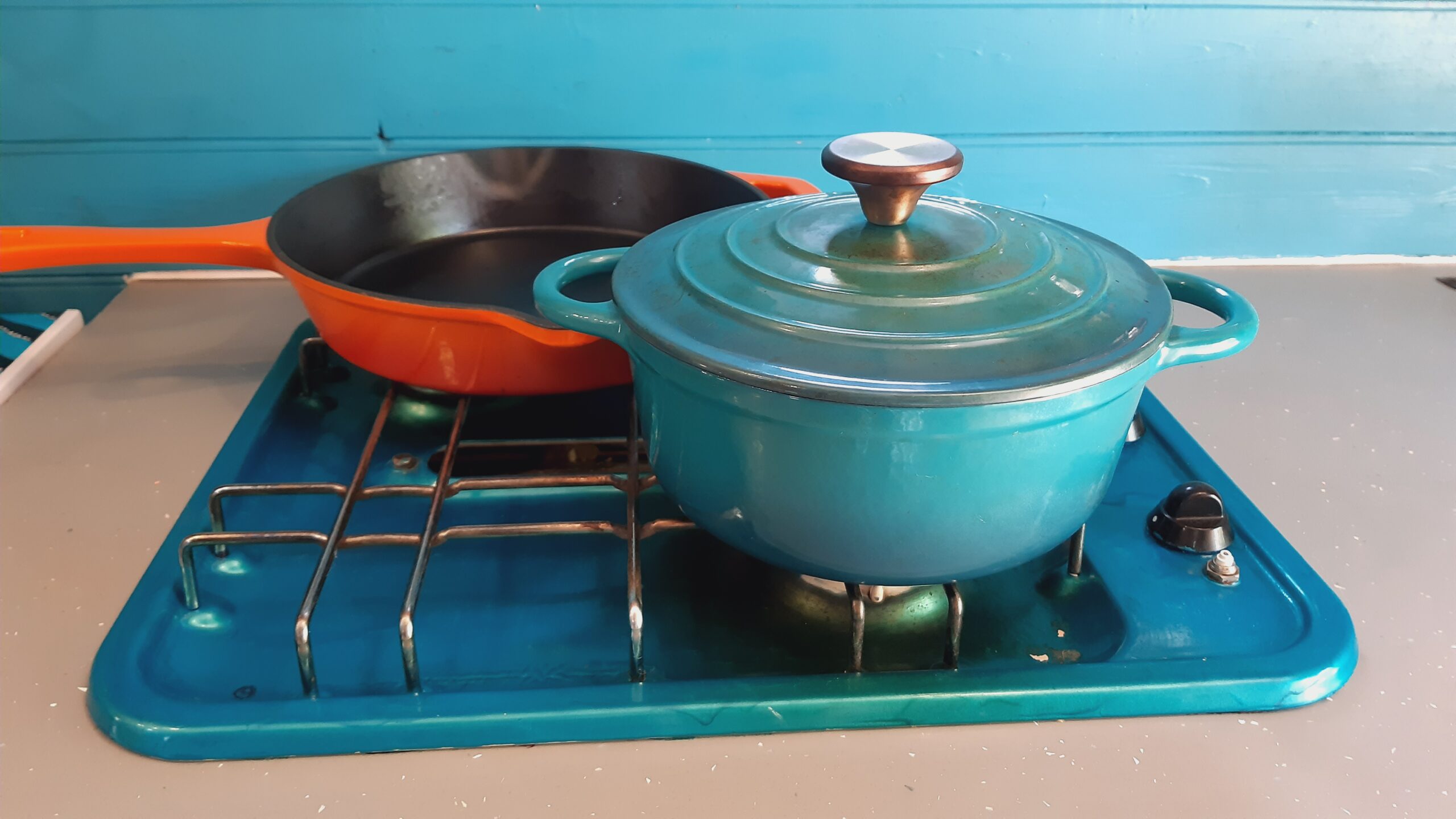
View comments
+ Leave a comment